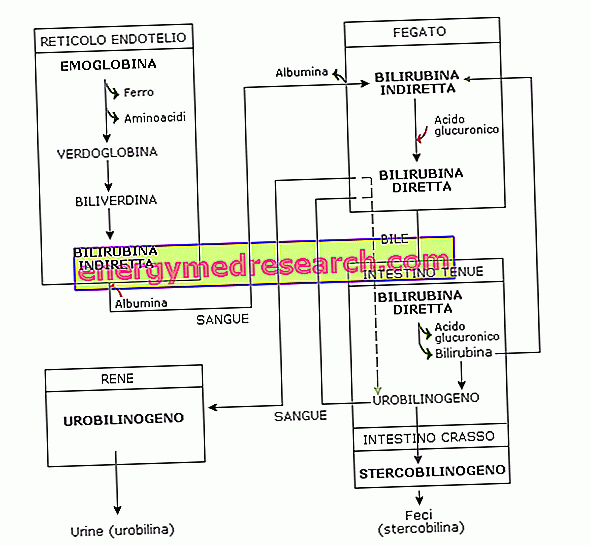Generality
The berries belong to the VI and VII group of foods, as they are particularly rich in vitamin C (although there are modest concentrations of carotenoids and some B vitamins). Wild berries are also rich in fiber, water, mineral salts, phenolic substances and fructose.

Berries have an extremely widespread and varied gastronomic use, even if from a commercial point of view their "retail" sale is much lower compared to traditional fruit (mainly due to rather high costs).
The berries are used for: fresh consumption (recommended to preserve the vitamin and antioxidant content), the addition to yoghurt, mousse, Bavarian cream, ice cream and other desserts, the flavoring of liqueurs, the extraction of juices of fruit, integration with leavened desserts (such as the panettone of S. Margherita Ligure), the aromatization of dishes such as braised venison, etc.
Berries: what are they?
The group of wild berries is not well defined and inside it can be placed all the typical fruits of the woodland spot. The most representative are undoubtedly: wild strawberries (fruits of F. vesca ), raspberries (fruits of R. idaesus ), blackberries (fruits of R. ulmifolius ), cranberries, blacks and ossicocchi (fruits of plants Genus Vaccinium ), red or black currants and gooseberries (fruits of the plants Genus Ribes ); on the other hand, black cherries (fruit of P. cerasus ), mulberry blackberries (fruits of M. nigra and M. alba ), black elder berries (fruits of S. nigra ) etc. may also fall into the same category.
Let's look at them in more detail:
- Wild strawberries: they are also wild berries called wild strawberries; they have an elongated shape, a bright red color and a sweet taste. It is said that they boast a strong purifying power and that the cutaneous outbreaks that often cause those who eat them in abundance are the result of an excessively rapid detoxification (affirmation devoid of scientific foundations); however, wild strawberries contain significant amounts of salicylates, potentially allergenic molecules; moreover, like common strawberries, they belong to the group of istamino-liberating foods.
- Raspberries: they are berries with a sweet taste that have the typical shape of polidrupa (called aggregates or compounds) and a red-yellowish color; they have diuretic and antioxidant characteristics. The buds and leaves of raspberries have good astringent properties.
- Blueberries: they are berries that look like small globose berries, one centimeter in diameter; they are black and veiled with bloom (vegetable wax). They contain high concentrations of anthocyanins, powerful antioxidants that improve blood circulation by strengthening the capillary walls.
- Blackberries: they are berries with a very sweet taste, with a typical form of polidrupa and (when completely ripe) a totally black color; they also contain salicylates. The leaves and shoots have been used for many years in herbal medicine to treat pharyngitis.
- Currants: they are red or black wild berries with a globular shape, characterized by a sweet-acidulous pulp; they have a diuretic and highly antioxidant action.
- Gooseberry: it is a forest fruit of the same category as currants; it resembles the classic white grape and the grape is covered with a characteristic down. It has strong antioxidant properties and some claim that it can strengthen hair.
Red Fruit Smoothie
X Problems with video playback? Reload from YouTube Go to Video Page Go to Video Recipes Section Watch the video on youtubeHygienic aspects
In 2013, both in some European countries and in central and northern Italy, there was a dramatic increase in cases of infection with "virus A"; after a traceability investigation carried out on potentially responsible foods, it emerged that the products involved in the onset of hepatitis A on the population could be berries from eastern Europe (Poland, Bulgaria, Serbia) and from Canada.
This virus, notoriously thermolabile, has no escape if the food is treated with cooking; however, by virtue of the numerous preparations that include the use of raw forest fruits and the positive analysis of the samples of the affected lots, it is likely to assume that the 70% increase in A virus contraction in the "Bel Paese" concerns its own fruit consumption.
Following numerous checks carried out on the lots involved in the scandal, the competent authorities considered it appropriate to apply a withdrawal from the market and to suspend the supply-sale both wholesale and retail.
Nutritional characteristics
Wild berries boast some common characteristics from a nutritional point of view; in addition to containing water and fiber in abundance, they bring a quantity of sugars (fructose) of medium size, associated with a vitamin concentration, antioxidants and mineral salts absolutely worthy of note. Wild berries can be contextualized (in moderation) in the type 2 diabetes mellitus diet.
The concentrations of vitamin C (ascorbic acid) and potassium stand out; the group of antioxidant phenolic substances is well represented by flavonoids, anthocyanins and tannins. Wild berries are also rich in phytosterols, useful molecules in the moderation of hypercholesterolemia.
Nutritional composition of some berries - Reference values of the INRAN Food Composition Tables
|
| |||||||||||||||||||||||||||||||||||||||||||||||||||||||||||||||||||||||||||||||||||||||||||||||||||||||||||||||||||||||||||||||||||||||||||||||||||||||
|
| |||||||||||||||||||||||||||||||||||||||||||||||||||||||||||||||||||||||||||||||||||||||||||||||||||||||||||||||||||||||||||||||||||||||||||||||||||||||







